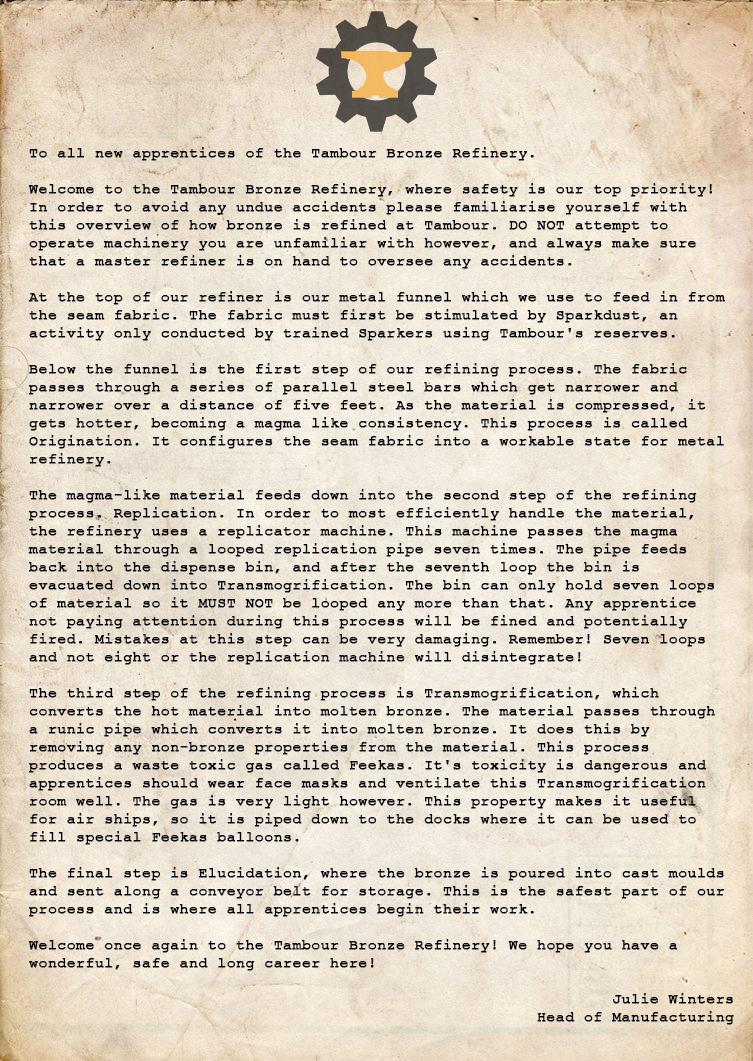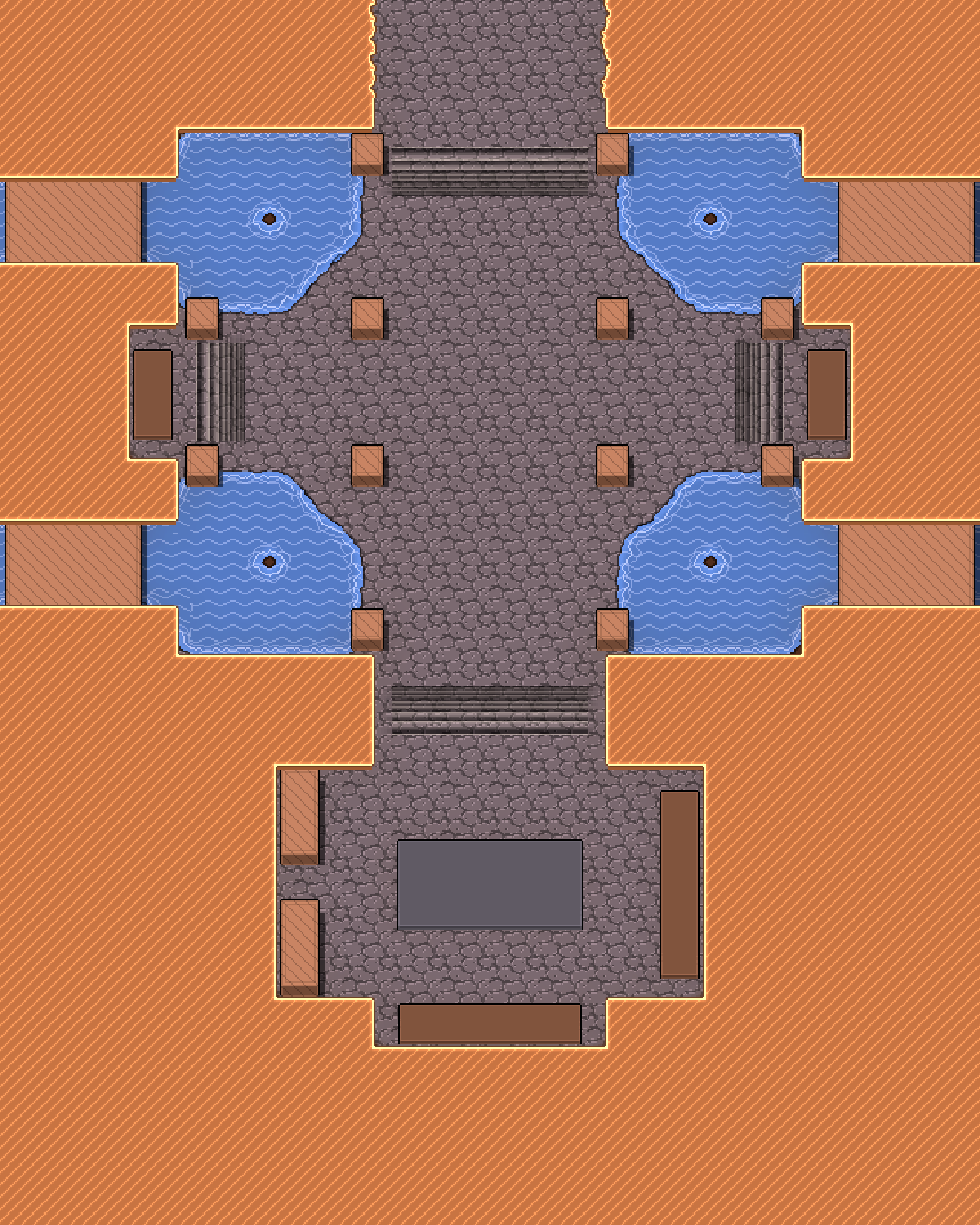The Seam Wiki Tambour Feb 09 2025
Tambour
Tambour is an abandoned bronze refinery outpost. It was abandoned after the wraith of a Fallen Bahamut Paladin, one of the original Holy Nine, was summoned using the power of the Planar Gem of Hades. Dark smoke filled the town killing many, who now walk the streets as undead. It has been sixty years since this happened.
The chalks to Tambour from the Lower Wyroads are intermittent and faulty and there is around 400 miles of deep black travel required to reach it.
The Village
Mix of bunkhouses and traditional family homes. Maybe 50-60 houses in the village total. Bunkhouses would traditionally be used for the apprentices and junior employees of the refinery.
The Dock
The docks at the Tambour are mostly empty as most ships were taken during the evacuation. However there are a few broken and rusting vessels still around.
There is a rusted barge remaining. It’s hull has almost completely rusted away making it quite a dangerous place to step aboard. The barge used to be powered by Chalk Sails. The sails seem to be mostly intact having been stowed before the evacuation. The masts themselves however could do with some work. The balloon is also in tatters.
There is a double decked galley remaining. However, the engine seems to have a lot of rust damage. It could potentially be salvageable but it would take a fair bit of work to get it running. The fuel tanks seem to be full but the quality of the fuel after sixty years is uncertain. The balloon appears to be deflated as it has a few tears in the material. The hull appears to be sound.
There is a light two person transport ship, most likely used for transporting materials and tools around the refinery. It appears to be unique in that the balloon is thicker, most likely too thick and heavy to have been filled using normal lifting gas. It instead uses Feekas, the heavier thicker material preventing too much of the lighter gas from escaping. The engine is in one piece however the rest of the hull seems to have been damaged during the evacuation.
The rest of the remaining boats are a mix of barges and the occasional galley. There are four others in total but all parts appear to be irrecoverable and the hulls beyond repair.
The Refinery
The refinery itself is a large vertical factory. It’s steel exterior houses the four processes required to convert seam fabric into bronze.
An old letter outlining the refining process can be found by the party:

There is a small pinch bag of Sparkdust to be found in the head office of the refinery. It is enough to restart the refinery for around two hours.
Shrine to Bahamut
The Tambour shrine to Bahamut was built by the Lost Followers of Bahamut in 5837. It was built to cage the spirit of one of the Fallen, whom the followers had killed when they arrived in the Seam.
Maps

Image too tall to render. Please find the full image here

Shrine
Above ground, the shrine has a small altar with a copy of the holy scriptures of Bahamut. This room is mostly filled with junk, having been boarded up after Marcus Brandt died.
Columbarium (The Trial of Knowledge)
Below ground, there is a columbarium. It holds the ashes of the few coverts from Tambour that occurred while the last followers were still around. The names on the boxes are:
- Aiglentina
- Themyar Thrist
- Yelric
- Mordan Thrist
- Kira
- Livi
- Eskel of Bahamut
There is also another box with the name Sedaf of Bahamut. Sedaf was a legendary hero of Bahamut, that died before the calamity and was buried outside of the Seam. Inside his box is a switch, which opens a hidden door to the rest of the shrine.
The Trial of Mirrors
The Trial of Mirrors houses a floor to ceiling mirror in the centre of the room which reflects the room that the observers are in, except that there is no exit/entrance behind them. If the observer turns around they will see that the exit has gone, and they are now on the other side of the mirror looking into a room with an exit. To leave, they will need to look at the mirror into the original room, and walk backwards through the entrance/exit.
The Trial of Faith
The Trial of Faith is a corridor filled with flaming jets. The jets go on and off in a sequence that allows people to walk through one by one. The jets eventually speed up, forcing the faithful into a full sprint by the end of the corridor, fully relying on the jets to maintain their pattern. At the end of the corridor is a lever which will reverse the direction of the flames.
Mausoleum
The Mausoleum consists of an ante-chamber, which is a partially excavated space with rough hewn walls, and the main chamber. The two are separated by a winding corridor that descends deeper into the rock supporting Tambour.
On one of the walls is a series of inscriptions, which describes the ritual required to seal the spirit of The Fallen.
- The first shows a body being wrapped.
- The second shows the body being placed into a stone tomb.
- The third shows the body being doused with holy water.
- The fourth shows the tomb being closed
- The fifth shows two Dragonborn using their breath weapons over the stone tomb.
The main chamber front room contains four still pools of water and two chests containing white linen. At the back of the room sits the tomb of the Fallen, next to some cupboards containing embalming equipment.